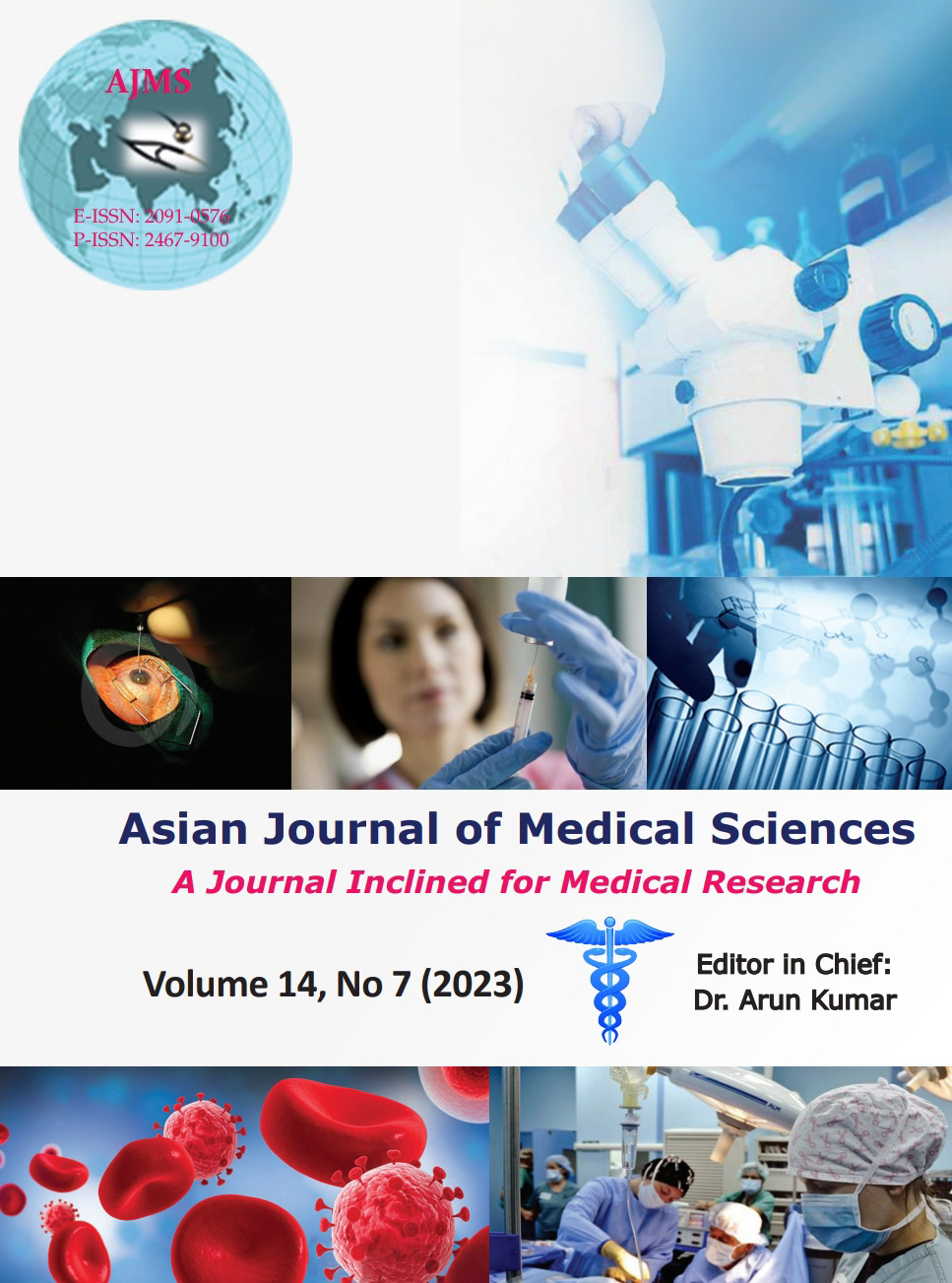Changes in central macular thickness before and after cataract surgery evaluated by optical coherence tomography in non-diabetic patient
Keywords:
Optical coherence tomography; Central macular thickness; Cataract; Cystoid macular edemaAbstract
Background: Optical coherence tomography (OCT) has been useful for objectively observing central macular thickness (CMT) changes inpre-operative and post-operative uneventful cataract surgery.
Aims and Objectives: This study was done to compare changes in CMT in small incision cataract surgery (SICS) and phacoemulsification surgery and to illuminate the OCT features of CMT after uneventful cataract surgery.
Materials and Methods: A prospective observational study was done at the tertiary eye care center from December 2019 to November 2020, a total of 60 patients underwent SICS and Phacoemulsification cataract surgery, were followed and examined postoperatively at day 1, 1 week, 1 month, and 6 months for whole ocular examination and OCT.
Results: Comparison analysis was performed using Friedman’s analysis of variance test.In SICS and Phacoemulsification group, statistical analysis differences between the mean CMT at pre-operative, post-operative 1 week, 1 month, and 6 months were found statistically significant (P > 0.001), subclinical macular edema (increase CMT without affecting visual acuity) was noted at 1 week and 1 month reviews.
Conclusion: The changes in CMT after cataract surgery are reversible, since the maximum measured increase in macular thickness at 1 month after surgery then gradually decreased at 6 months follow-up. This increase remained subclinical, and no evidence of clinical cystoid macular edema was seen on OCT.
Downloads
Downloads
Published
How to Cite
Issue
Section
License
Copyright (c) 2023 Asian Journal of Medical Sciences

This work is licensed under a Creative Commons Attribution-NonCommercial 4.0 International License.
Authors who publish with this journal agree to the following terms:
- The journal holds copyright and publishes the work under a Creative Commons CC-BY-NC license that permits use, distribution and reprduction in any medium, provided the original work is properly cited and is not used for commercial purposes. The journal should be recognised as the original publisher of this work.
- Authors are able to enter into separate, additional contractual arrangements for the non-exclusive distribution of the journal's published version of the work (e.g., post it to an institutional repository or publish it in a book), with an acknowledgement of its initial publication in this journal.
- Authors are permitted and encouraged to post their work online (e.g., in institutional repositories or on their website) prior to and during the submission process, as it can lead to productive exchanges, as well as earlier and greater citation of published work (See The Effect of Open Access).




